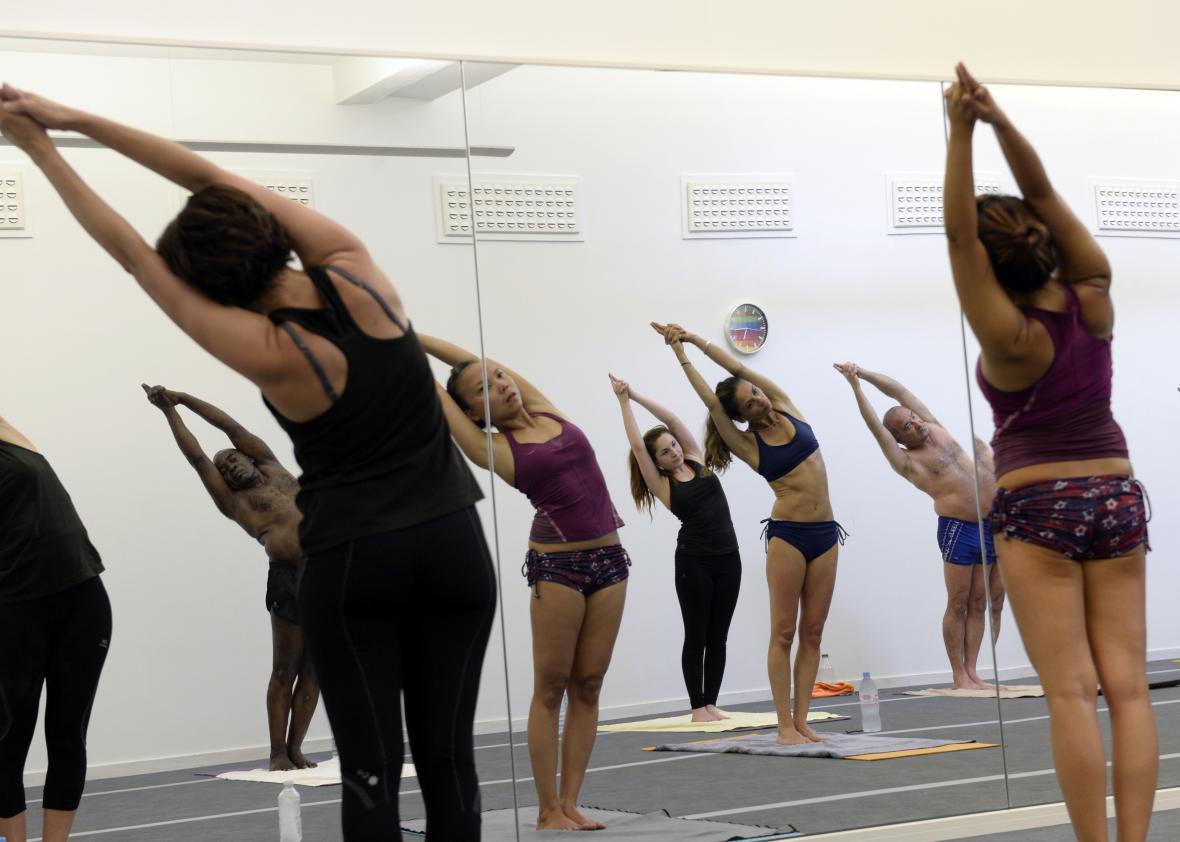Good news for practitioners of yoga: Bikram Choudhury has encountered another setback in his long quest to prevent competitors from teaching the sequence of 26 postures that characterize Bikram yoga. Choudhury has been suing studios that dare to teach Bikram’s 26 asanas—which Choudhury didn’t invent; he only sequenced them—for more than a decade. Despite repeated denials from courts and the United States Copyright Office, he’s persisted in filing lawsuits. This time, the 9th Circuit Court of Appeals has ruled that Choudhury’s suit against a Florida studio, Evolution Yoga, is baseless.
Choudhury has had his share of legal woes in recent years. As you might recall, several women have accused Choudhury of sexually assaulting and harassing them; most of their civil lawsuits are pending in California court. On top of five-figure teacher-training sessions, Choudhury charges hefty franchising fees to any studio that uses his name. He’s also made claims of having magical healing powers.
Does Choudhury deserve any credit for popularizing the calming, beneficial practice of yoga among Americans? I don’t think so. I’ve practiced yoga for about 14 years, attending classes at dozens of studios around the country and globe, and I’m far from the only person to conclude that Bikram yoga is yoga in name only.
In every single non-Bikram yoga class I have ever taken, instructors have encouraged focusing on one’s breathing and paying attention to the limits of one’s body. You’re not supposed to push in yoga; you’re supposed to find your edge—the point at which a pose is challenging but not painful—and see if you can use your breath to relax into it. Not in Bikram! The Bikram classes I’ve been to are characterized by a drill-sergeant-like attitude on the part of the teachers, who shout out rapid-fire instructions, clap their hands to indicate that it’s time to jump from one posture to the next, and, above all, encourage students to push past their limits. The presence of a mirror further encourages students to value appearance over experience. I can hardly imagine an environment less conducive to quiet meditation and introspection than a Bikram class where someone is yelling at you to straighten your leg in utthita hasta padangusthasana, no matter how awful it feels.
Obviously, Bikram wouldn’t be popular if there weren’t demand for this kind of instruction. (There are other benefits, too: The sweltering heat of a Bikram classroom feels great and allows your muscles to open up more than they would at room temperature.) Choudhury was clearly onto something about human nature—or at least the widespread American belief that exercise should feel like punishment—when he decided that yoga teachers should dominate their students instead of, well, teaching them. But the profit that Choudhury has made on Bikram yoga is founded on a betrayal of yoga’s philosophical origins—a complete negation of the essential idea that yoga is not a simple workout but an meditative practice that links the body and the mind via the breath.
Once you’ve compared a Bikram class to any other style of yoga, it’s no surprise that Choudhury would try to copyright a sequence of postures that have been practiced for thousands of years. It’s of a piece with his disregard for the legacy of yoga.
